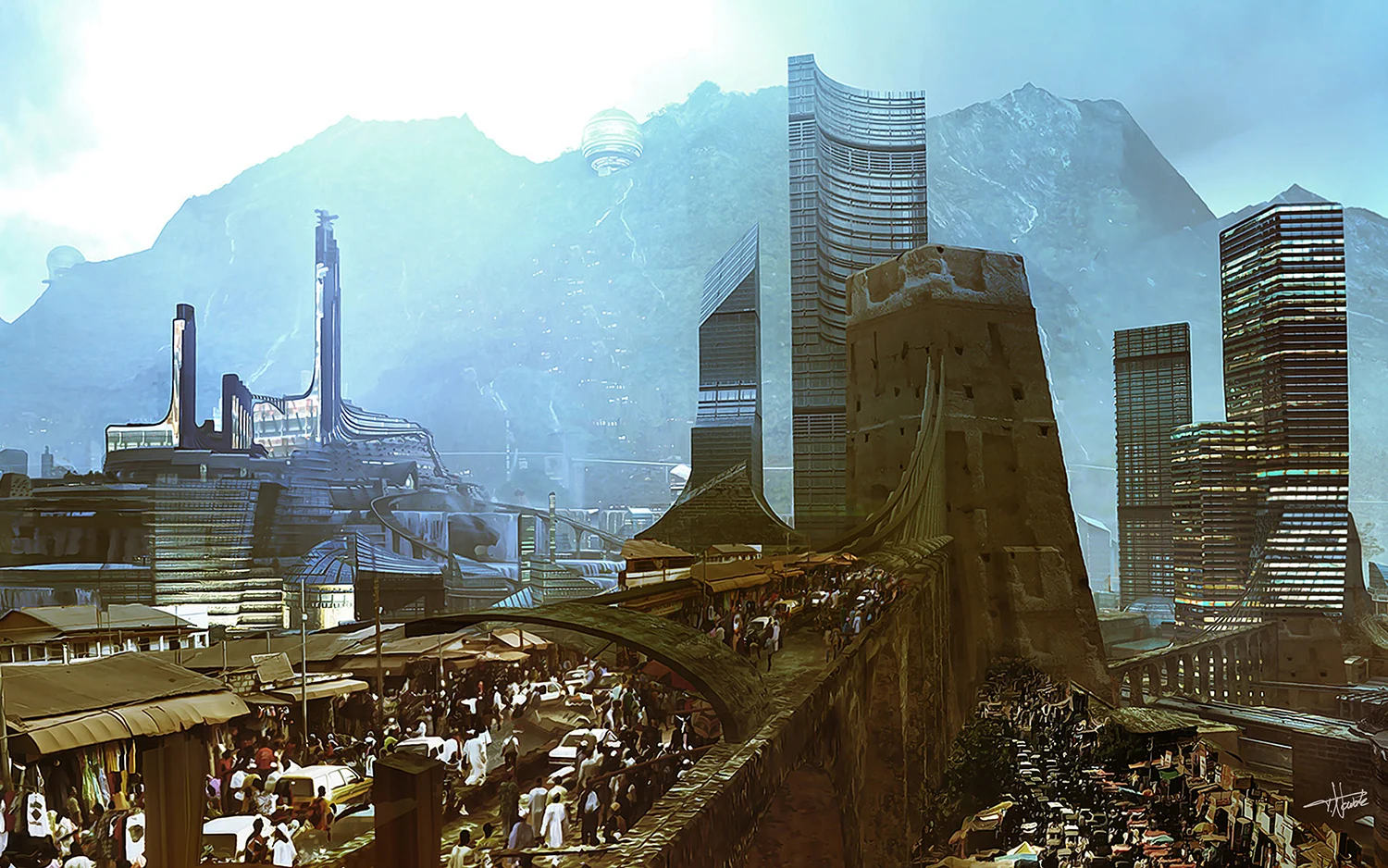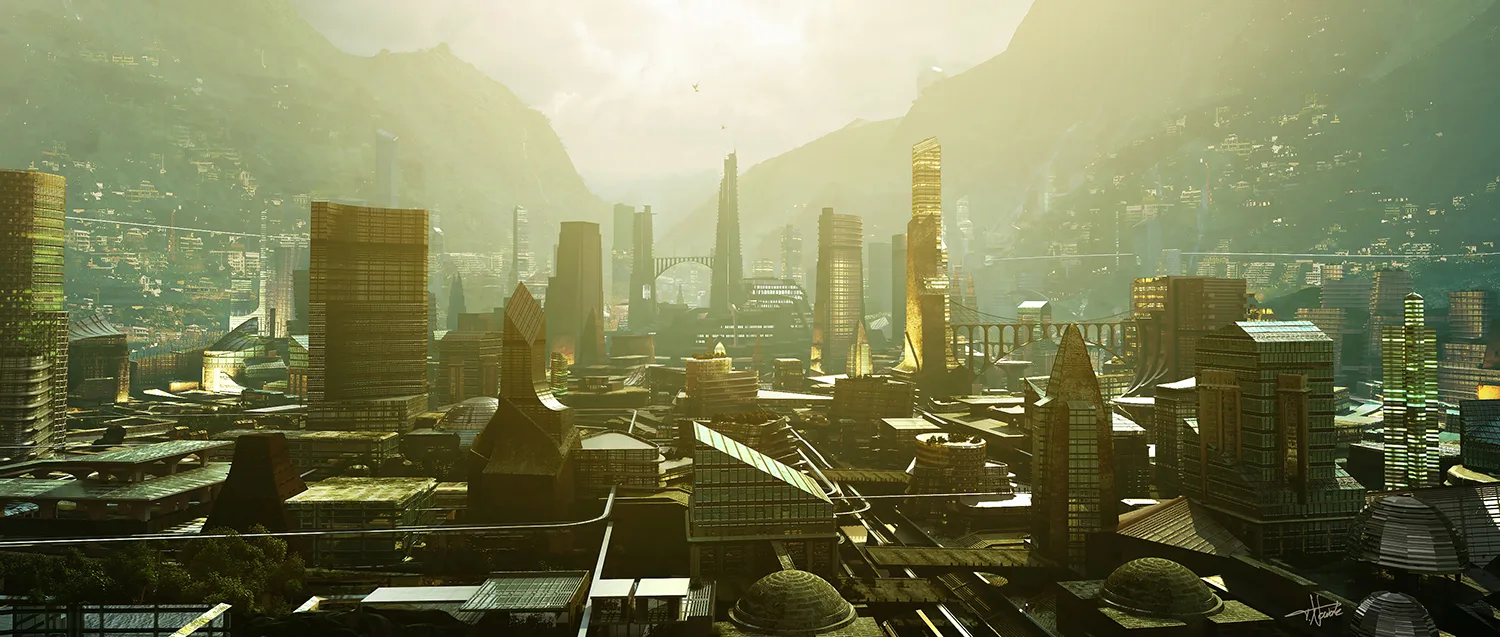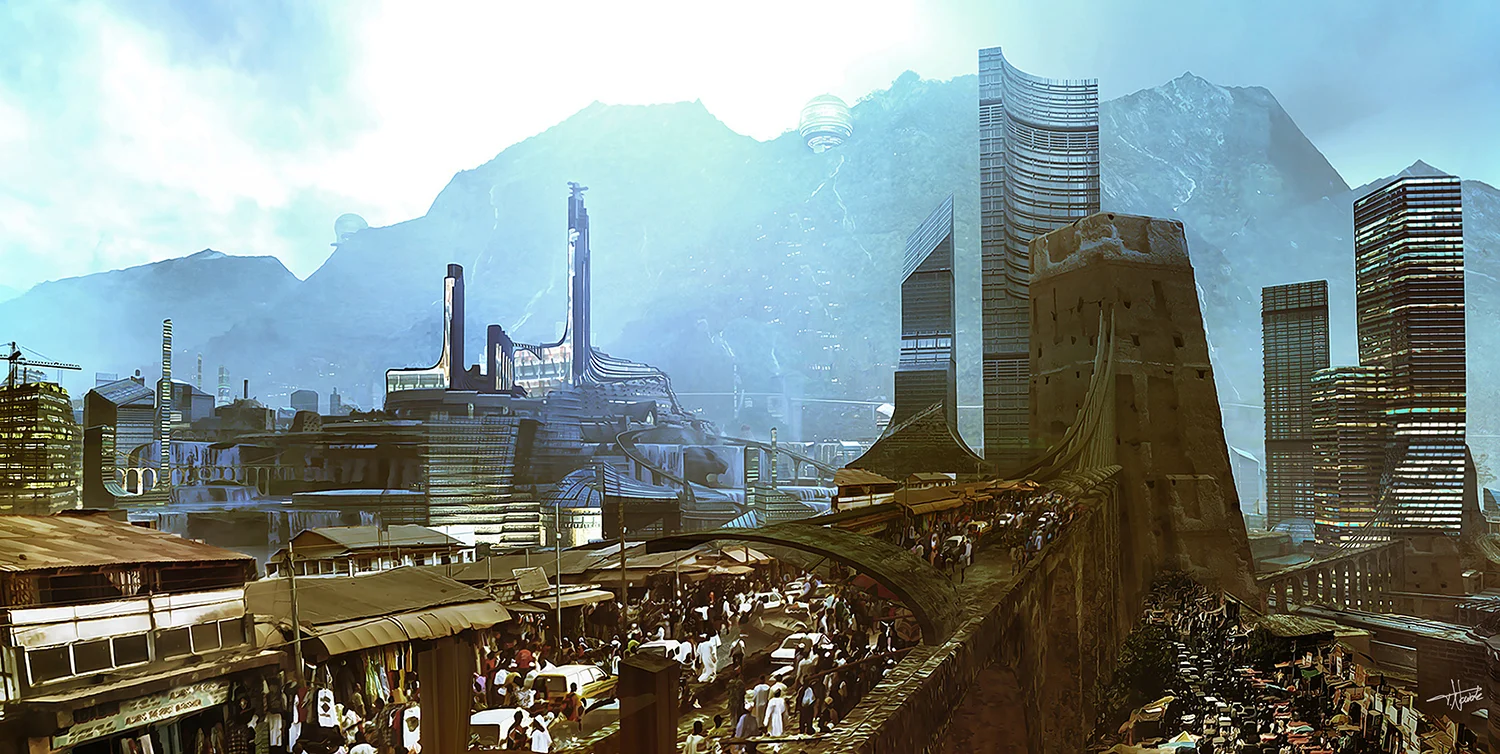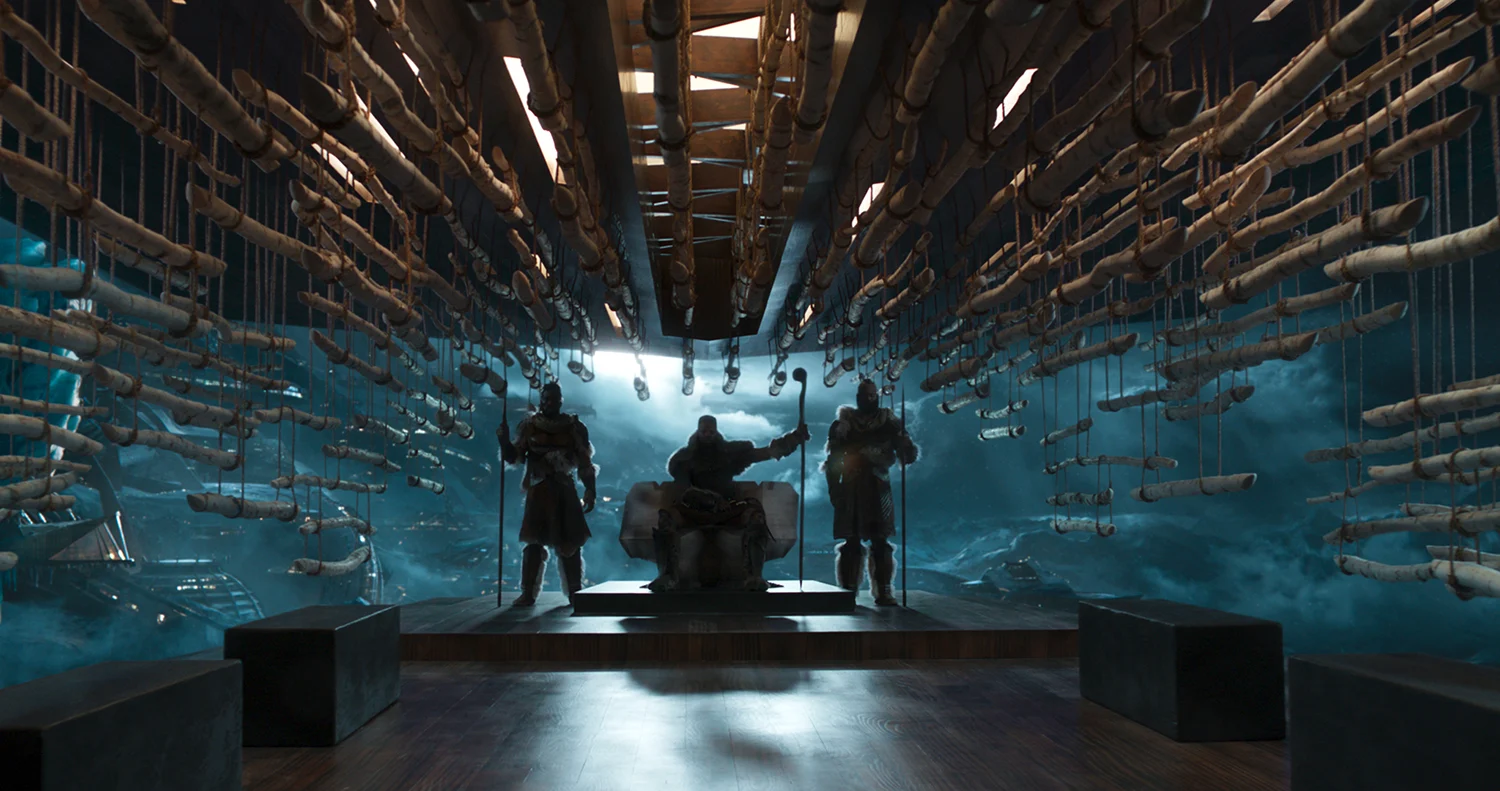
Black Panther broke box-office records and set a new standard for superhero movies. But how does a film like this come together? How do ideas become visuals that become scenes? That’s where concept artists like Till Nowak come in.
Rob Alderson spoke to him about working on Black Panther, his creative approach and why a childhood toy-ban turned out to be a blessing in disguise...
A few days before Black Panther opened in cinemas, the cast and crew gathered for a special preview screening at the Fox Theater in Westwood Village, Los Angeles. The mood was a mix of expectation and celebration – everyone had the feeling they had contributed to something special. As the lights went down before the film, Till Nowak readied himself to see the world he helped create brought to life.
Till was the first concept artist hired by production designer Hannah Beachler to visualize Black Panther for the big screen. For the first few days it was just him and Hannah in the art department room of Marvel Studios.
But to tell Till’s story, and the story of his work on the year’s biggest blockbuster, you have to rewind a few decades to the Nowak family home in the pretty German city of Mainz.
“We were constantly surrounded by art,” remembers Till, whose parents and brother Nik are all artists. The boys weren’t allowed to play with the cheap plastic action figures their friends had, so they simply made their own.
“It was normal for us on the weekends to create little stop-motion films or build miniature worlds out of cardboard. Nik and I often created little theater plays with self-made puppets, or shot short films on a VHS camera. For us it was all just one big playground, and we never stopped playing, even today. We just professionalized it.”

Till went on to study media design at Mainz’s University for Applied Sciences and his career has taken in animation and advertising commissions, fine arts and films. “I bounce back and forth between European culture and Hollywood pop culture,” he says, and a few years ago he moved with his family to LA.
His work starts, “following a feeling, with little theory.” He lets himself be led by his intuition and then defines a set of rules from which he can allow his creations to grow organically.
“I like to work in a space where anything is possible, creating worlds that are alive and mutating, like in a dream,” he says. “My goal is to use computer software like a painter uses a brush on canvas, with the kind of artistic freedom that requires artistic and technical skills to be on the same level.”

Black Panther was not his first film commission – Till also worked on Thor: Ragnarok and the second Guardians of the Galaxy movie. But right from the start, this job felt different.
“The vision of the director, Ryan Coogler, and the production designer, Hannah Beachler, was so unique, so artistic, and their style of filmmaking so authentic,” he says. “To work on a film like this comes with a lot of responsibility. Usually it's about pleasing the Marvel fans, by interpreting things correctly, but on this project the responsibility was bigger, going beyond the superhero genre. Everybody was aware this would have cultural significance.
“Perhaps the only way for Ryan and Hannah to work is to just do it from the heart, with their true emotions. My job as an artist is to listen, to understand and interpret their vision and the needs of the story as faithfully as possible.”

Coogler and Beachler began their research with a trip to Africa, taking visual cues for the Panther world, Wakanda, which has been described as an Afrofuturist Eden. “They went to experience and absorb the culture and styles, from which we built the utopia of a hidden African country that had never been colonized,” Till explains. “It was very important to them to incorporate elements from all over Africa while also pushing it into a futuristic, yet undiscovered direction.”
The aim was to create something that felt African in its influences, without seeming strained through the white gaze which relies so often on stereotypes and cliches. Concept artists like Till are some of the first specialists brought on board, often up to two years before the cameras start rolling. Their work is intense and immersive.
“We were taking the first steps into Wakanda,” he says. “The production designer has already developed an overall vision for the look of the film, based on the script, that we start turning into visuals bit by bit,” Till explains. “We generate illustration after illustration, every day, hundreds of them over several months, to design every set, every world, every city, every planet, every building and every room the film plays in.
“At the start there is a lot of freedom, but the closer we get to shooting, the more the focus gets directed to the physical stage builds. In the end, it’s all teamwork. The team grows throughout the creation of the film, and in the end there are hundreds of talented people who make it all happen, physically and digitally.”

Till’s main focus was Wakanda’s capital, the Golden City, and T'Challa's palace. He also worked on the mountain world of Jabari Land, the healing hut where one of the pivotal scenes takes place and some prototypes for Wakanda’s aircraft.
There is a great moment when first see the Golden City, as T'Challa (aka the Black Panther)'s spaceship swoops down through the canopy of a rainforest. He leads us in with the line, "This never gets old."
For the Golden City, the challenge was to balance the comic-book world of Wakanda with the wealth of African references collected by the film’s creators.
“We studied an enormous amount of traditional African buildings, art and design,” Till says. “Hannah wanted the flowing, repetitive patterns of traditional African textiles to be the inspiration for the city’s footprint, so they became the basis of a curvy street layout and the intertwined layered terraces of the palace.”
For the buildings they had to work out how the “cultural heritage” of traditional African construction styles might be reimagined in a world built from vibranium, a super-powerful high-tech material native to Wakanda.
“So you can see rows of spikes along the buildings, and on the towers of the palace, which reference a construction method that you can see on old buildings like the Great Mosque of Djenné, in Mali. These spikes originally served as scaffold for the maintenance of the buildings, and although they don't serve that purpose any more on the skyscrapers of Wakanda, the cultural heritage is visible,” Till explains.


Till continues, “This symbiosis of ancient and modern elements is continued inside T'Challa's palace. There is an ancient temple embedded in the council room. The tribal council is still held on top of that old temple, like it might have been done in ancient times, but it is aligned with a modern glass floor, preserving the heritage, integrating it, making it part of the modern world without harming it.”
In a recent interview, Hannah Beachler explained the palace was inspired by the dimensions of the Queen of England's London home. "The perfect size for what a palace should be is roughly is 359 feet by 486 feet, like Buckingham Palace."
He worked closely on this room with set designer Patrick Dunn-Baker, and the city itself took ten months to create with a whole array of artists contributing. It was a fascinating but gruelling task, largely because of the city’s scale and complexity. “I was dealing with thousands of buildings in one big 3D model, from the whole valley down to details as small as an individual door knob,” he says. “Every once in a while I reached a point where my computer couldn’t handle the amount of data any more, and I had to reorganize and consolidate elements.
“During the concept phase, a 3D model is like an organic mass, a constantly mutating digital playground that can become chaotic, because it goes through changes and revisions every day over the course of months.”

For the Jabari Land, the original plan had been to create a tropical rainforest. But instead director Ryan Coogler decided to place it in the snow drifts of a mountainous region instead, and so Till and the rest of the team got to work.
“It was important for the story to create a visual contrast between the Golden City and Jabari Land,” he explains. “While the city has more round shapes and is made of stone, mud and vibranium, the Jabari Land has more straight lines, sharper geometrical shapes and is made of wood.
“One of the most exciting, and most challenging tasks was the design of M'Baku's throne room. Hannah had a very strong idea of wood that was aligned parallel, pointing to M'Baku's throne to express his power, as well as his relation to his tribe and the environment. It was a very powerful image, but it wasn't initially clear how it could be executed.
“Together with art director Jason T. Clark, we went through countless iterations to find the solution of birch logs suspended by ropes. I think it became one of the most stylish set of the movie, and one that I am most proud of having contributed to.”


Till is always quick to pay tribute to the vast army of people needed to make a film like this a reality. Even though he was one of the minds who helped imagine the world of Wakanda, he knows that the success of something like Black Panther belongs to the whole team who made it happen.
Which brings us back to that cast and crew screening, just a few days before the world would go wild for this film. “It's always an amazing experience to see the result of early conceptual work on the big screen,” Till says. “But more than my own work, I see the work of all others. It’s amazing teamwork; a complex puzzle solved by hundreds of people, most of which I never met.”


